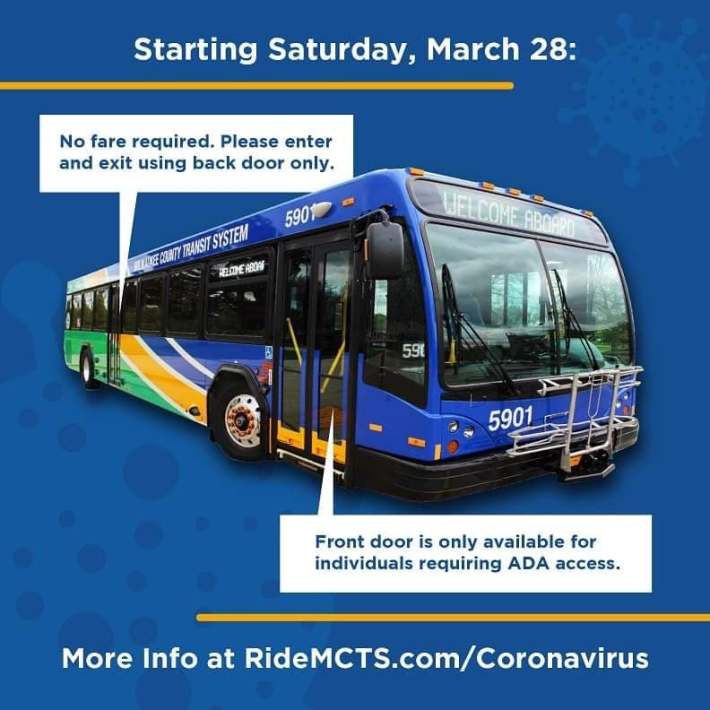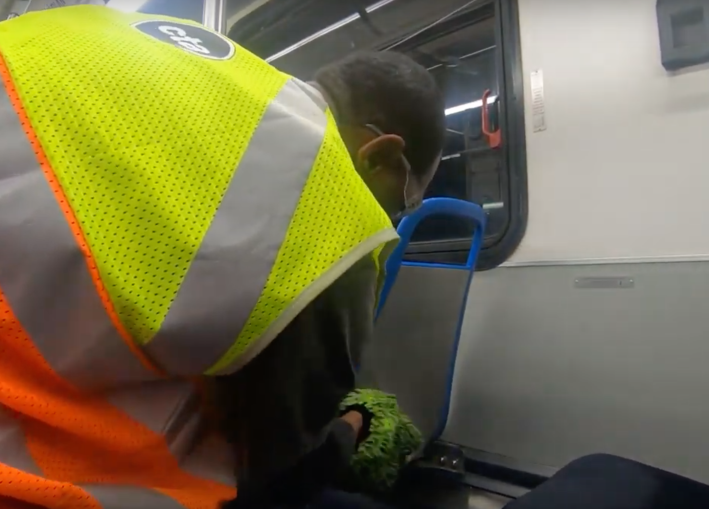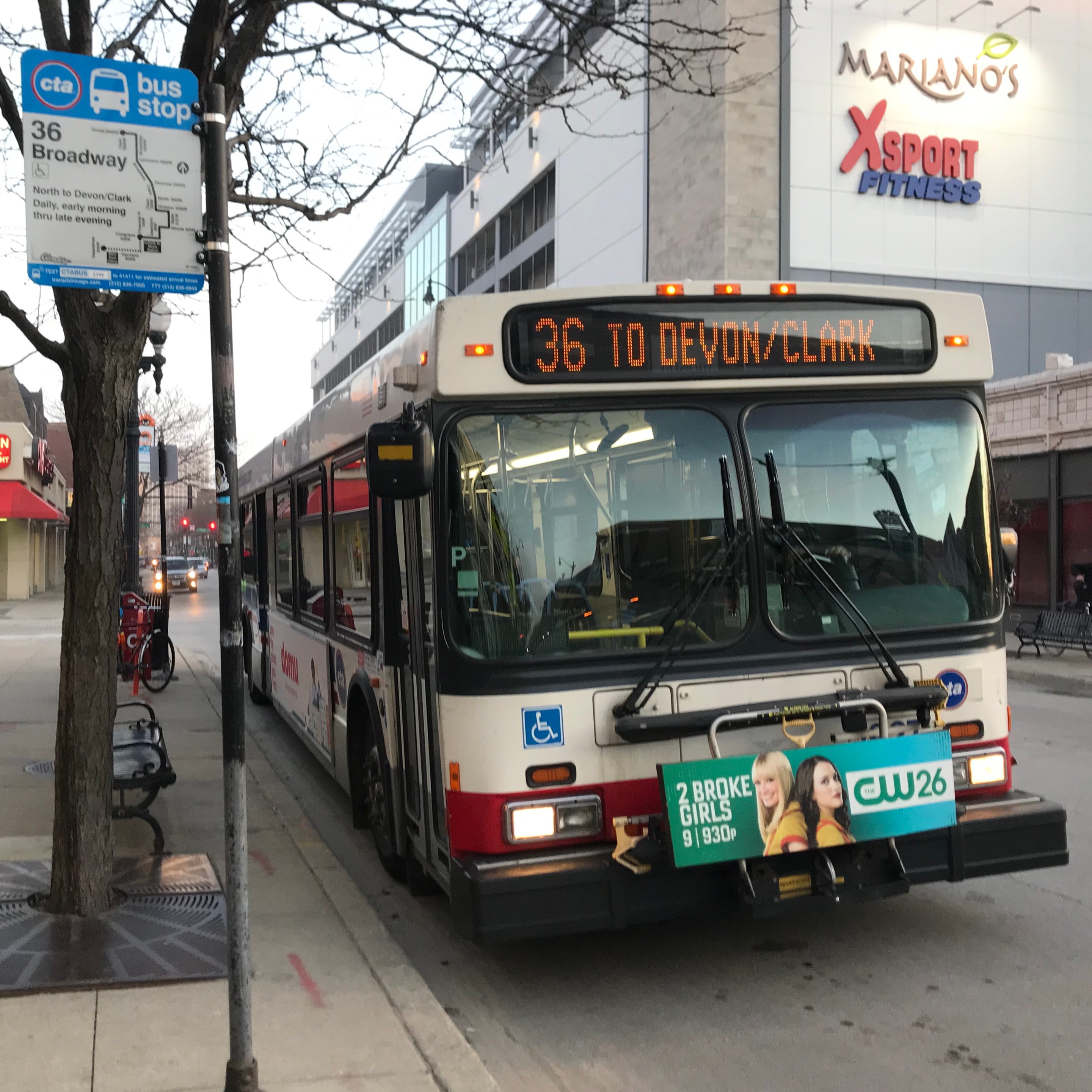Overall CTA ridership has dropped about about 80 percent during the pandemic, but the CTA is continuing to provide service for essential workers and other transit-dependent residents. However, so far the agency has failed to take steps that many or most major U.S. transit systems have implemented to protect workers and riders, including waiving bus fares and requiring passengers to board through the rear door to reduce queueing and minimize the driver's viral exposure. Amalgamated Transit Union Local 241, which represents CTA operators, has also been calling for more protective gear for their members. To learn more about the union's safety campaign, we reached out to local president Keith D. Hill. The interview has been lightly edited for clarity.
Imelda March: What is the morale of CTA bus drivers and train operators during the pandemic?
Keith Hill: At this time, the morale among the employees is very low. The confidence is low at this point due to the amount of misinformation that has been circulating. Too many personal opinions have been reaching our members. For example, a bus driver asked me if there are ten people at the rear of the bus and one of the passengers is a carrier, could he be infected.
IM: How many members of your union have tested positive for COVID-19?
KH: Ten of them tested positive for the virus, and we are waiting for results for another 50 members. We are have not been given a timeline for the results. The members who are awaiting results are no longer working.

IM: What are you doing to pressure the CTA to implement rear-door bus boarding, which would reduce a workers' exposure to the COVID-19?
KH: We are currently in conversation about this issue and have argued for implementing this measure. We fear that the CTA is more concerned about the collection of fares rather than the safety of the workers.
For example, the 79th Street bus is experiencing overcrowding. We have [successfully lobbied the CTA to place] inspectors at various stops to advise bus users [if a bus is dangerously crowded] to wait for the next available bus. [The CTA has] supplemented transporting bus users with shuttle buses to alleviate congestion. We feel that the job of our drivers is to get users from point A to B.
IM: What do you hear from the CTA about the reasons for not implementing rear-door boarding on buses?
KH: Again, we are in discussion about implementing a rear door boarding procedure; however, the current design of the buses do not have a mechanism for collecting fares from passengers using the back doors. I am aware that other cities have implemented free [bus service] using a rear-entry bus system. My fear of implementing a system where users are not required to pay to use the service will result in more overcrowding.
IM: Have you been pressuring the CTA to run more buses on dangerously crowded lines, like 79th Street?
KH: We are in discussion about solutions to the overcrowding on buses such as the 79th street bus service.
IM: I have seen buses with two or three passengers while the overcrowding occurs on other parts of the system. Do you have accurate data that reflects the current ridership patterns on the CTA?
KH: Before the COVID-19 crisis, the CTA handled about 1.8 million passengers a day. Now with the virus, the number of passengers has decreased significantly; however, I believe the amount to be closer to 200,000 to 300,000 daily across rail and bus. [The CTA estimates it at about 250,000.]
IM: Due to the working conditions in some parts of the transit system, is a strike a possibility, or does the union's contract with the CTA prevent that from happening?
KH: I believe a walkout could happen; however, no timeline has been established.
IM: Are you anticipating any layoffs due to the decrease in passengers using the transit system?
KH: Our contract with the CTA has a layoff clause. If we should come to the point where layoffs will occur, then issues around lay-offs can be discussed.
IM: Is there any information about paying bus and train operators time-and-a-half as a form of hazard pay?
KH: We are discussing the needs of our members, and it would become an issue of paying now or paying later.
IM: How often are the filtration systems being changed on buses and trains?
KH: I am familiar with the filtration systems on the buses, and those were being changed weekly before the virus. Under current conditions, the bus filters are changed every two to three days.

IM: Can you share how frequently the CTA buses and trains are being cleaned and what cleaning products are being used?
KH: In the last two weeks, the CTA has stepped up the cleaning of the buses and trains. I am not comfortable with the way they are executing the cleaning at this time. Correctly, they are spraying disinfectant to keep areas clean. I would feel more comfortable [if the CTA was using] bleach in all areas. For example, the handrails and seating areas should be treated with bleach.
IM: What is being provided to CTA workers to protect themselves?
KD: The CTA and the ATU are working hand in hand. The ATU provides the workers with gloves and surgical masks weekly. The CTA also provides surgical masks and hand sanitizer. As of April 7th, the CTA informed me that they will not be providing any additional surgical masks since the CDC has now released information that using the masks is an optional measure. The distribution of protective gear to ATU members is done once per week.
IM: Does the CTA have a system of checking transit employee temperatures?
KH: We are discussing obtaining no-contact infrared thermometers to monitor the temperature of our members.
IM: What kind of education are transit workers getting about this epidemic? Or where are union members getting up-to-date information about COVID-19?
KH: We have an email list of approximately 3,000 members and have about 2,000 followers via our social media channels. We send out information via email and broadcast through our social channels. Additionally, we share information on our website. We could be repeating information; however, it is better to share as often as we can. I feel that ATU can reach 75 percent of our members through digital communication.
Here are some tips on preventing the spread of COVID-19, and advice for Chicagoans on what to do if you think you may have been exposed to the virus.





